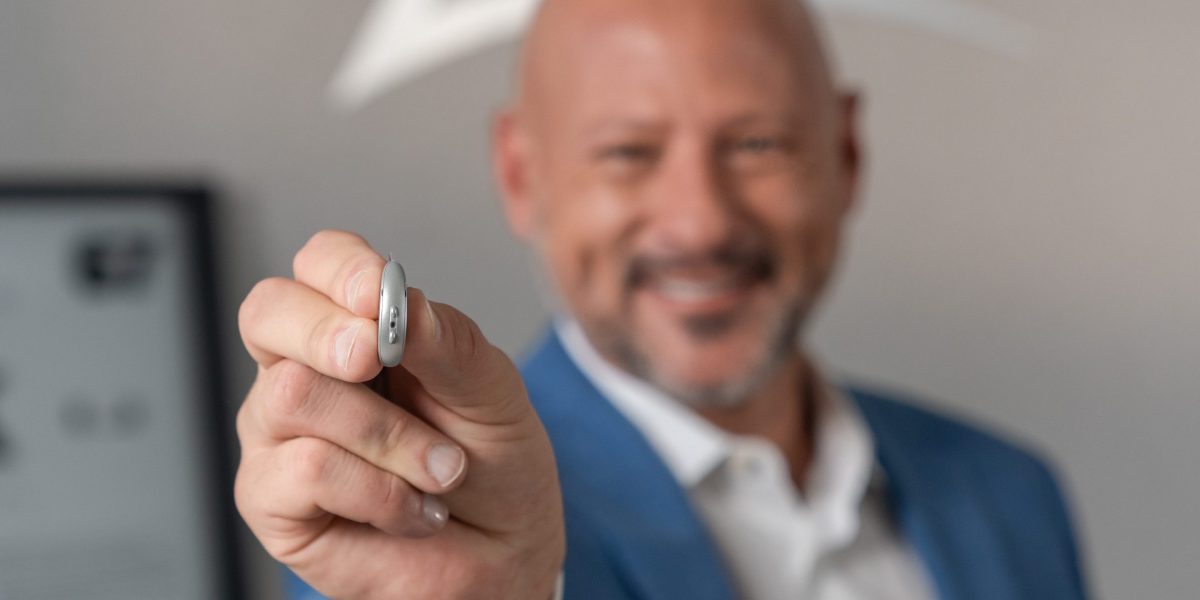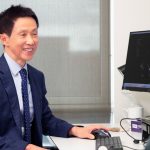The future of hearing health is poised for a significant shift, according to the Hearing Loss Association of America, which anticipates that over 2.5 billion people globally will experience some degree of hearing loss within the next 25 years. This statistic represents nearly a third of the world’s population. Starkey, a billion-dollar company at the forefront of hearing technology, is tackling this growing health concern head-on. On Thursday, the company introduced its latest innovation: the Omega AI hearing aid.
Omega AI stands out as the world’s first hearing aid to incorporate deep neural network technology, enabling advanced directionality and spatial awareness features. Deep neural networks, modeled after the human brain, operate through layers of nodes that process information sequentially. Starkey’s hearing aids utilize this technology to make over 80 million automatic adjustments every hour, ensuring optimal sound quality and clarity in speech.
This groundbreaking device allows users to better distinguish sounds in various settings. For instance, if someone is taking a walk on a windy day, the Omega AI aids in focusing on their walking partner’s voice while minimizing disruptive background noise.
Dave Fabry, Starkey’s Chief Hearing Health Officer, shared insights on user experience: “We have [many patients] who really just want this to occur at a subconscious level. They want to have all of the power of AI and computational power, the ability to improve speech understanding, in quiet and noise and all of those situations. But they don’t have to engage with the devices any more than necessary in order to get the benefit.” This feature is particularly beneficial for older users, who may be hesitant to adopt AI technology due to unfamiliarity or apprehension.
Beyond hearing enhancement, the Omega AI aligns with Starkey’s vision of transforming hearing aids into lifestyle devices. The model features health-related tools available through the My Starkey app, offering exercises to enhance stability and coordination, along with an automatic respiratory rate monitor—a first in the industry.
Brandon Sawalich, the president and CEO of Starkey, emphasized the company’s drive for innovation: “Our engineers and scientists and audiologists are looking at what we can do for sound quality, improve patients’ lives. We’ve ushered in a new era of intelligent hearing. We keep pushing the boundaries of what hearing aids can be.”
In the broader context of wearable health technology, Starkey’s innovations gain additional significance. With tech giants like Apple introducing new AirPods featuring active noise cancellation, heart-rate sensing, and fitness tracking—claims that the devices could serve as clinical-grade hearing aids for those with mild to moderate hearing loss—some may view this as competition. However, Sawalich sees an upside in such advancements. “I love that Apple is bringing attention to hearing loss and what they’re doing with AirPods,” he remarked, stressing the diminishing stigma around hearing aids.
What differentiates Starkey from its competitors is a focus on creating products that are discreet, comfortable, and designed for extended wear. According to Fabry, “The most effective technologies are those that just seamlessly integrate into a person’s life, that become a part of their day-to-day existence.” While Apple’s AirPods are wireless and convenient, they can still be cumbersome compared to Starkey’s personalized solutions.
Moreover, battery life presents an additional challenge, especially for users with significant hearing loss. Starkey has engineered its devices to support up to 51 hours of continuous use, a notable industry-leading feature. The devices also incorporate a telehealth capability, enabling professionals to make remote adjustments to settings, improve usability, and ensure a seamless experience through features like battery life indicators, alerts for wax buildup, and even emergency notifications in case of falls.
Sawalich also highlighted the endorsement from celebrity investor Daymond John, 56, who actively uses Starkey hearing aids, as well as Kevin O’Leary, 71, who praised the products for enhancing his daily productivity on film sets.
“We saw his eyes light up,” Sawalich recalled, referring to O’Leary’s enthusiastic response. “He was talking about how he uses Starkey products for his productivity during the day. If he’s sitting on a set or waiting for filming, he’s here listening to his text messages through the Starkey devices.”
Starkey’s Omega AI mark is not just a step forward in hearing technology; it embodies a commitment to enhancing quality of life for those facing hearing challenges, positioning itself at the intersection of health, technology, and lifestyle.






